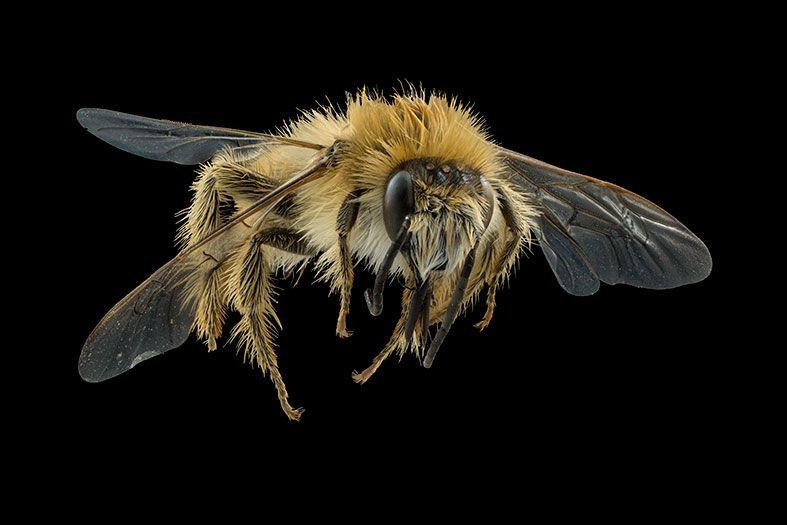Bees, ants, wasps and sawflies have an almost unbelievable variety of shapes, colors and behavior. Where does this diversity come from? Scientists from the Museum für Naturkunde Berlin, the Smithsonian National Museum of Natural History, the Université de Montpellier, the University of New Hampshire and the Florida Department of Agriculture and Consumer Services have shown that the switch of Hymenoptera from a parasitoid lifestyle to pollinating plants significantly increased their diversity.
The question of how did such species diversity arise has led to manifold ideas and theories. In an effort to investigate the key innovations underlying this diversification, the researchers compiled the largest time-calibrated evolutionary history of the Hymenoptera to date. It included 771 species from 94 of 109 recognized extant families, representing all 22 recognized superfamilies within Hymenoptera and six non-Hymenoptera outgroups.
On the basis of their own phylogenetic analyses, they investigated the origin and possible correlation of certain morphological and behavioral innovations, long suspected to be key innovations, with species diversity. They tested whether the wasp waist of Apocrita; the sting of Aculeata; a specialized form of carnivory (parasitoidism); and the switch to plant feeding (secondary phytophagy), may be keys to diversification.
"Our data suggest that parasitoidism has been the dominant life strategy in Hymenoptera since the Late Triassic. Subsequently, several shifts from a parasitoid strategy to a secondary phytophagous or predatory lifestyle occurred, but only from the Middle Cretaceous onward.
Diversification of angiosperms may have favored the evolution and diversification of gall-forming and pollen-collecting Hymenoptera, as shown by known cases of codiversification between plants and their pollinating Hymenoptera," explains Dr. Bonnie Blaimer, lead author of the study. However, this assumes that angiosperm diversification occurs before secondary phytophagy in Hymenoptera. This is precisely what the researchers found.
While the timing of the angiosperms' emergence is controversial, most estimates range between 130-180 million years ago. This is indeed before the evolution of the secondary phytophagous groups (clades) in the Hymenoptera, which the authors estimate started 105 million years ago.
The authors have shown that the transition to secondary phytophagy had a major impact on diversification rates in Hymenoptera. It is a key innovation," concludes Bonnie Blaimer, adding, "It remains unclear whether the sting and wasp waist are key innovations for species diversification as well. Nonetheless, these traits may have laid the anatomical and behavioral groundwork for adaptations more directly linked to diversification."
Humans owe about one-third of their food supply to hymenopteran biodiversity triggered by the key innovation of secondary phytophagy.
Publication:
Blaimer, B.B., Santos, B.F., Cruaud, A. et al. Key innovations and the diversification of Hymenoptera. Nat Commun 14, 1212 (2023). https://doi.org/10.1038/s41467-023-36868-4
Keywords
Evolution, biodiversity, bees, Hymenoptera, diversification, key innovations, morphology
